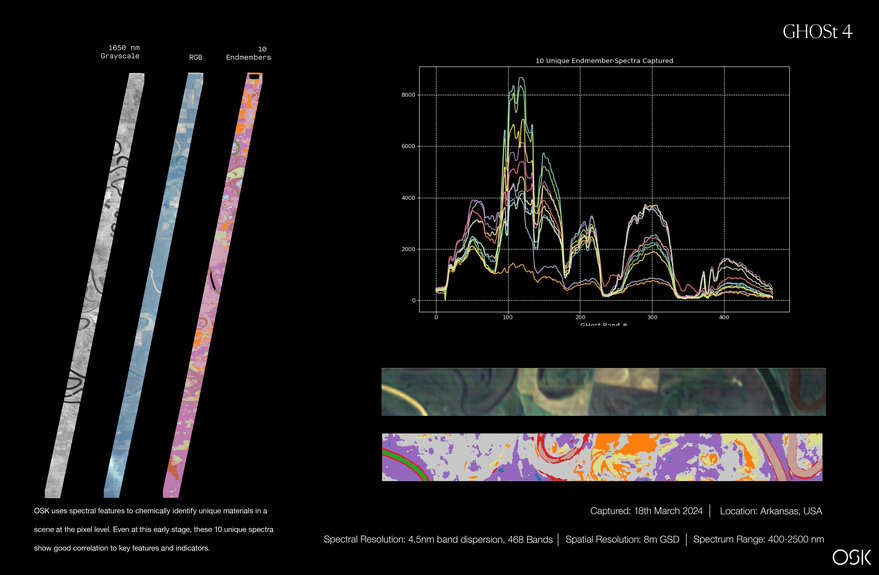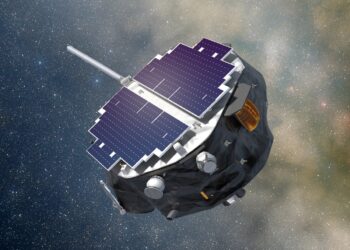SAN FRANCISCO – Orbital Sidekick released first-light imagery April 3 from two hyperspectral satellites launched March 4.
The Global Hyperspectral Observation Satellites (GHOSts) launched on the SpaceX Transporter-10 rideshare flight began gathering data March 18. Both satellites are healthy and going through commissioning, Tushar Prabhakar, OSK co-founder and chief operating officer, told SpaceNews.
The new satellites, the fourth and fifth in OSK’s constellation, gather data in 468 spectral bands from 400 to 2,500 nanometers with 8-meter resolution.
A sixth satellite is expected to launch within the year. A GHOSt constellation of 14 to 20 satellites to provide weekly global monitoring is OSK’s goal.
“The hyperspectral data we are providing allows us to do a lot of chemical fingerprinting,” Prabhakar said. “On the energy side, we look for methane and other hydrocarbon leaks. One of the critical components is being able to tell whether the leak is on a pipeline right-of-way or if it’s coming from a wellhead or a compressor station.”
In addition, Orbital Sidekick alerts oil companies to activity near pipelines that could cause leaks like someone digging nearby.
“Having this kind of spectrum allows us to get in front of leaks before they happen,” Prabhakar said.
Orbital Sidekick has been focused on the energy sector since the company was established in 2016. OSK works closely with the intelligent Pipeline Integrity Program, a consortium focused on technologies to prevent and detect pipeline leaks.
On the government side, OSK is working with the U.S. Air Force, U.S. Space Force, National Reconnaissance Office, U.S. Geological Survey, Oak Ridge National Laboratory and In-Q-Tel.
Future markets for OSK data include mineral exploration and agriculture.
OSK sensors…
Read the full article here



